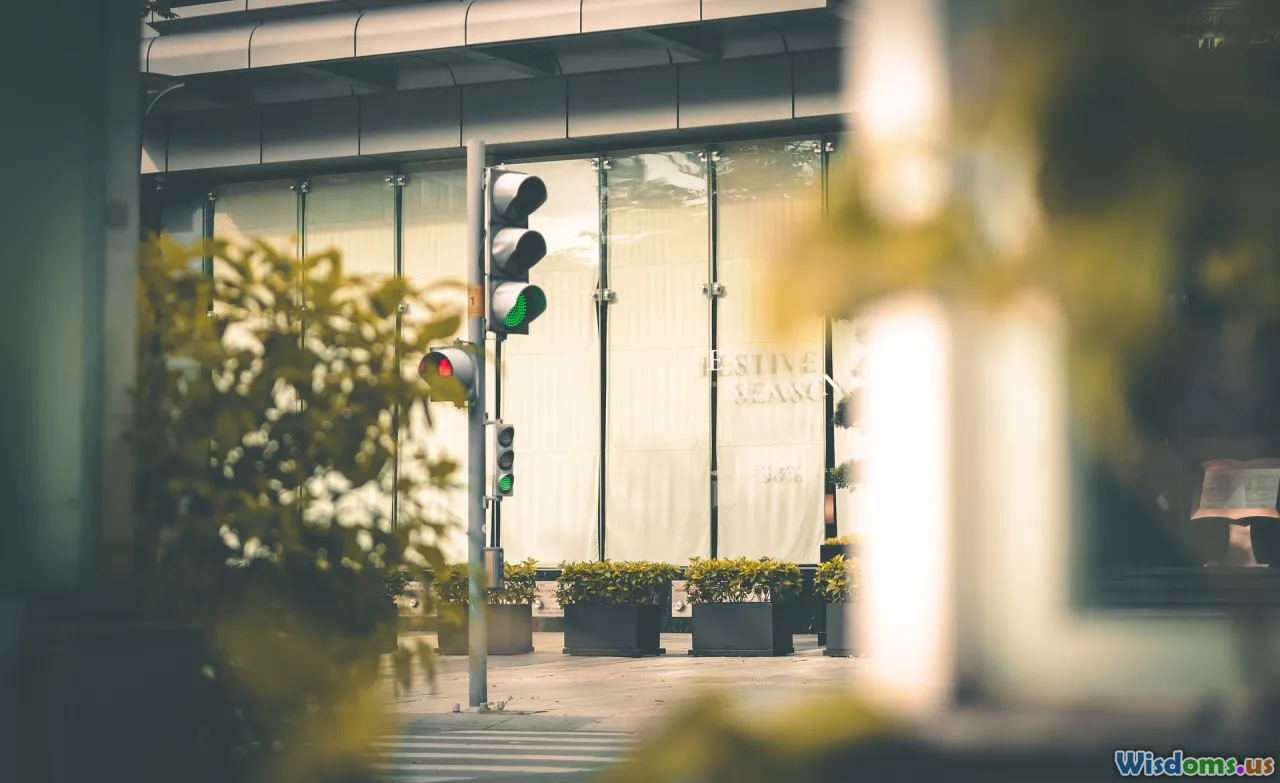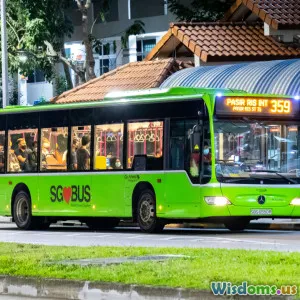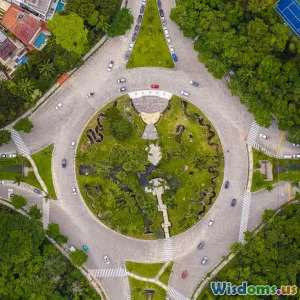
Why Cities Should Invest in Solar Streetlights Now
13 min read Explore why solar streetlights are a smart, impactful investment for cities seeking sustainability, cost savings, and safer streets. (0 Reviews)
Why Cities Should Invest in Solar Streetlights Now
Introduction: Lighting the Path to a Sustainable Future
Picture a city street—bustling by day, serene at night. At the flip of a switch, a thousand bulbs illuminate sidewalks, intersections, and public spaces. But what if the very energy powering those lamps could originate, cost-free, from above? In a world wrestling with climate change, rising urban budgets, and the quest for safer, more livable cities, a simple question is increasingly being asked: Why not harness the sun to light our streets?
Solar streetlights present a compelling opportunity tailor-made for this moment. Their gleaming panels and energy-storing batteries are no longer science fiction but an emergent solution reshaping nightscapes across the globe. And as technology improves while pressures to decarbonize intensify, cities have powerful new incentives to act now. The following sections detail the myriad reasons, from sustainability to savings, from safety to resilience, why urban leaders should fast-track investment in solar-powered street lighting.
1. The Economics: Saving Money and Resources
1.1. Slashing Energy Bills
Traditional streetlighting is a significant drain on municipal budgets.
- Fact: According to the International Energy Agency, public lighting accounts for up to 19% of global electricity consumption in cities.
- Example: New York City spends over $100 million yearly to power 250,000 streetlights. Replacing legacy systems with LED and solar hybrids could slash these costs by 40-60%.
A solar streetlight draws freely from sunlight during the day. Modern systems use highly efficient solar panels and advanced batteries that power LED lamps through the night. Completely off-grid models, especially, can result in net-zero operational electricity costs.
1.2. Lowering Maintenance and Infrastructure Costs
Solar streetlights are robust, often requiring less maintenance than conventional lighting.
- No wires mean fewer breakdowns (no copper theft or cable faults).
- Installation is cheaper: No need for costly trenching, specialized labor, or new grid connections. The World Bank notes installations can be up to 60% faster than standard grid-tied lights.
- Case Study: In the Indian city of Bhopal, deploying over 20,000 solar streetlights cut maintenance calls by nearly half within two years, saving $2 million in repair costs.
1.3. Access to Incentives and Grants
Many countries and international organizations incentivize solar adoption for municipalities:
- Example: In 2023, the European Union committed €56 million to smart and solar street lighting projects as part of its Green Deal.
- In the U.S., various state-level "green infrastructure" grants make funding more accessible than ever before.
By starting now, cities can leverage these temporary incentives while prices for conventional electricity remain volatile and often high.
2. Climate Commitment: Reducing Emissions and Pollution
2.1. Urban Emissions and the Role of Lighting
Cities consume over two-thirds of world energy and generate 70% of CO₂ emissions. Streetlights are a small but symbolically and cumulatively potent “lever” for urban decarbonization.
- Each traditional light switched to solar can eliminate 1.5 to 2 metric tons of CO₂ emissions per year (US EPA, 2022).
- Imagine a mid-size city converting 50,000 streetlights: That’s the carbon-saving equivalent of taking 15,000 cars off the road annually.
2.2. Local Air Quality and Heat Benefits
Apart from CO₂, fossil-powered and old-style lights contribute to local pollution.
- Outdated lighting systems can overheat, raising urban heat in already vulnerable zones.
- Solar-powered LEDs generate cooler, more focused lighting, helping mitigate urban heat islands and reducing smog formation.
2.3. Visible Climate Leadership
Modern solar streetlighting is public, visible proof of a city's green credentials.
‘Cities are the cradles of environmental innovation—solar investments signal genuine leadership,’ says Maria Torres, UN Environment Programme urban energy advisor.
Communities take notice, and local governments boost their reputation as sustainability trailblazers, which can attract green-minded families and businesses.
3. Safer, More Resilient Communities
3.1. Brighter, Smarter, Safer Streets
Well-lit streets are proven to reduce accidents and crime at night.
- A 2021 London Metropolitan Police study found a 21% drop in night-time street crime along corridors illuminated with modern LED and solar lights.
- Solar technology supports smart lighting (adaptive brightness by pedestrian presence), enhancing both safety and energy efficiency.
3.2. Resilience During Blackouts and Disasters
Solar streetlights are inherently off-grid or can be easily hybridized to survive grid failures.
- Hurricanes, storms, and grid overloads often leave urban streets in darkness; solar-powered lights stay online, crucial for safety, emergency response, and business operation.
- Puerto Rico post-2017 Hurricane Maria: Mobile solar streetlights restored critical visibility in weeks where the grid took months to recover.
3.3. Equitable Access to Light
Municipal streetlighting can be patchy in low-income or peripheral neighborhoods—not just in the developing world, but also in neglected zones of rich cities. Solar's low installation complexity makes coverage easy even on marginal roads, bridges, rural towns, and parks.
- Example: Nairobi’s slum solar-lighting project delivered streetlights to informal settlements, which had never had safe public lighting, reducing harassments and improving women’s mobility after dark.
4. Technological Breakthroughs: Now Is the Ideal Moment
4.1. Dramatic Improvements in Solar, Battery, and LED Tech
- Solar panels have tripled in efficiency (6% to over 20%) since 2000, while battery storage costs dropped up to 85% over the last decade (BloombergNEF, 2023).
- new smart controllers allow lights to dim automatically or alert operators to repairs remotely, cutting service delays.
4.2. Modular Design: Future-Proofing Investment
Each light is an integrated, replaceable system: swapping out newer batteries, updating to smart traffic sensors or WiFi relays, or upgrading PV panels is simple. Today’s investment is protected against obsolescence.
- Case Study: In Singapore, 2022, a district retrofitted its solar street lamps to double as environmental sensors, collecting air quality and noise data without expensive overhauls.
4.3. Falling Upfront Costs
- Costs of basic solar streetlights have fallen 60% over ten years, and "as-a-service" financing reduces capex for cities. Projects funded through energy performance contracts (EPCs) let repayments be made from future energy/maintenance savings.
- Microfinanced community and business improvement districts are also banking on solar solutions for public lighting.
5. Sustainability and Public Life: Human-Centered Cities
5.1. Healthier, More Pleasant Communities
Solar-powered LEDs offer customizable light temperatures, reducing glare and supporting circadian health. Research links softer, whiter LEDs with:
- Lowered nighttime driving accidents
- Reduced stress and disruption to neighborhood wildlife
5.2. Enabling Social Participation and Cultural Life
Brighter, reliably lit streets don't just cut crime; they encourage evening social life: from markets and festivals to family walks.
- In Visakhapatnam, India, expanding solar streetlighting doubled after-dark market attendance within months, boosting local incomes and enlivening public spaces.
5.3. Artistic and Smart City Integrations
Solar streetlights double as platforms for artwork, banners, and sensor-based city services (traffic management, pollution alerts, public WiFi). This adaptability supports the emerging vision of "Smart Cities" that are truly people-centered.
6. Overcoming Obstacles: Addressing Concerns and Misconceptions
6.1. Cloudy Weather and Battery Limits
Modern storage solutions—and grid-solar hybrids—provide several days' worth of reserve energy. Germany and the UK, both cloudy countries, have successfully deployed thousands of solar streetlights with minimal outage.
6.2. Light Pollution Fears
Solar-powered LEDs are more easily directed and can reduce wasted upward glare; built-in controls dim or switch off lights to minimize excessive night lighting while preserving safety.
- Fact: Davis, California’s solar retrofit cut sky glow by 22% in residential zones compared to legacy sodium lights (2019 study).
6.3. Initial Investment Budgeting
Upfront costs can be a hurdle. But "lighting-as-a-service" models, paired with falling equipment prices and higher maintenance savings, make true net-positive ROI achievable—often within 5 years, sometimes much sooner.
- Many projects even recover their initial outlays via grants, as noted earlier.
7. Case Studies: Solar Streetlights in Action
7.1. Los Angeles, California: Scale and Savings
Los Angeles converted 165,000 of its streetlights to smart LED and solar, reducing energy use by 63% and CO₂ output by over 47,000 metric tonnes per year—the equivalent of a small forest. Feedback collected from neighborhoods indicated a marked increase in perceived safety and nighttime activity.
7.2. Dakar, Senegal: An Urban Lifeline
In Dakar, a public-private partnership rolled out solar streetlights across bus corridors previously considered too dangerous to use at night. Public transit usage soared, and vendors reported income boosts thanks to new evening trade.
7.3. Dubai, UAE: Extreme Environments
Despite being one of the world’s hottest climates, Dubai's main business parks adopted solar lighting to avoid grid overloads and demonstrate low-carbon leadership. The savings on cooling-related energy use were an unforeseen bonus: less power draw means less ambient heat generation.
Conclusion: Light Up the Future—Act Now
As the evidence accumulates—from better air and lower bills to improved safety, equity, and city pride—it's clear that solar streetlights are no longer a novelty but a necessary foundation for tomorrow's cities. The benefits aren't just futuristic—they're immediate. Further, the opportunity cost of waiting is growing: incentives may shrink, energy prices likely rise, and climate deadlines are looming.
It's time for urban policymakers, local leaders, planners, and citizens to reimagine what city lighting can do—and to champion solar streetlights as the clear, compelling next step.
Let’s light our streets sustainably—and brighten the future for all.
Rate the Post
User Reviews
Popular Posts




















